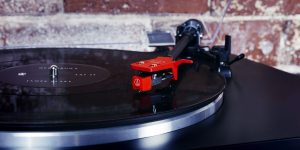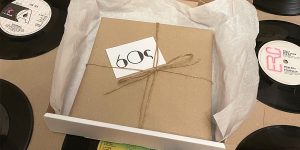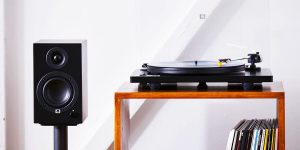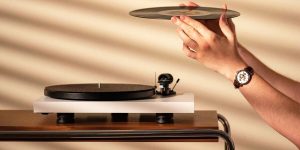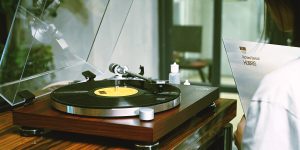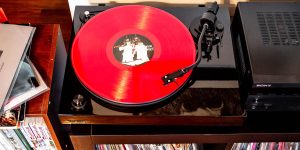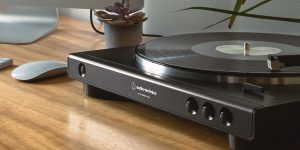If you decided to buy a vinyl record player, but your budget can’t afford a top-of-the-line model, you’ve come to the right place. Of course, you want to choose the best record player for beginners out of many options. I understand your desire, and my review will help you with that.
These entry-level machines are often basic, designed to be user-friendly, and relatively light on the wallet. In this article, I’ve handpicked only the finest quality players that stand out in the crowd of starter options – turntables that promise to elevate your initial vinyl encounters without complicating the joy of your first spin.
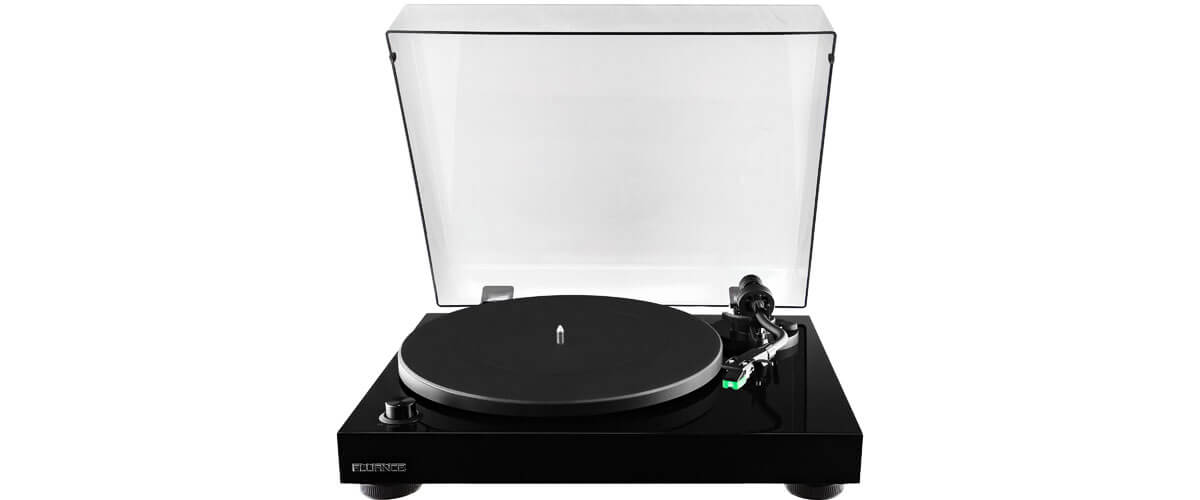
Record players for beginners comparison table
| Name | Drive type | Operation type | Speeds | Phono Pre-Amp | Bluetooth | Review |
|---|---|---|---|---|---|---|
| Fluance RT81 best overall | belt | manual | 33 1/3, 45 RPM | yes | no | Review |
| Audio-Technica AT-LP60X budget | belt | fully automatic | 33 1/3, 45 RPM | yes | yes | Review |
| Electrohome Kingston 7-in-1 all-in-one | belt | semi-automatic | 33 1/3, 45, 78 RPM | yes | yes | Review |
| Sony PS-LX310BT also great | belt | fully-automatic | 33 1/3, 45 RPM | yes | yes | Review |
What are vinyl players for beginners?
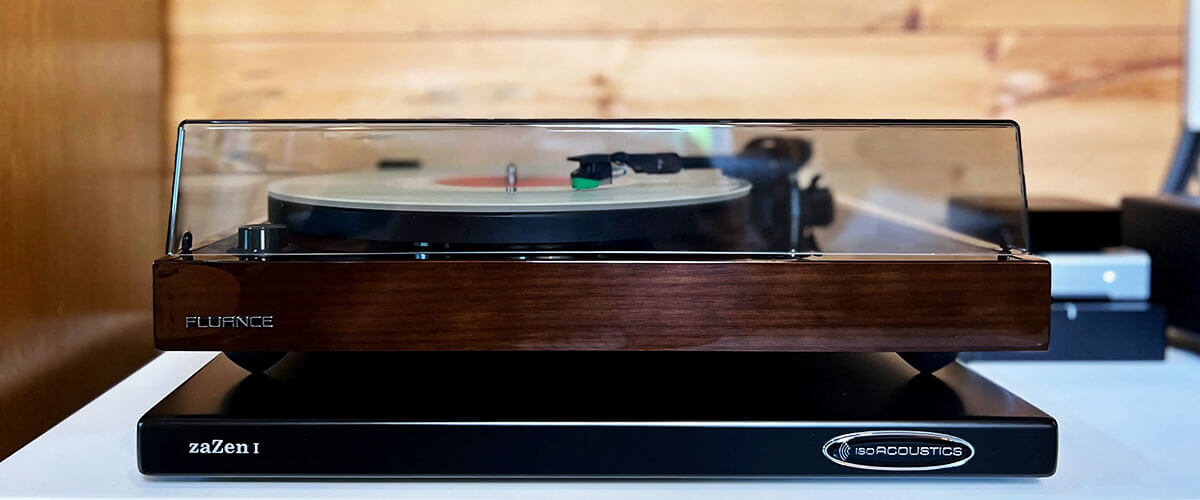
Vinyl players for beginners are crafted to simplify the listening experience. These models often come equipped with straightforward features, allowing newcomers to enjoy their records with minimal setup. A beginner turntable typically includes a pre-fitted cartridge, user-friendly controls, and often, built-in speakers & preamps to avoid the need for additional equipment.
However, these models do have their limits. The components, such as a stylus and platter, are often more basic and less refined than those found in high-end turntables. This means they might not extract every nuance from the vinyl’s grooves, potentially leading to a less detailed sound. Additionally, customization options are limited, which can restrict your ability to upgrade parts over time.
But despite these constraints, entry-level record players are a practical choice for those starting their vinyl journey, providing a balance between performance and accessibility.
Best record player for beginners reviews
Fluance RT81 – best overall

The Fluance RT81 settles into the room with elegance. Its high-mass MDF wood plinth is not just an aesthetic statement but a promise of stability and vibration damping. The belt-driven system and Audio Technica AT95E cartridge complement each other, working in tandem to deliver a performance that is both nuanced and reliable.
As I settled in with the RT81, the ease of setup was a pleasant surprise. Balancing the tonearm was a bit fiddly, but isn’t that part of the charm? It’s like tuning an instrument before a performance – essential for the perfect sound.
The built-in Texas Instruments preamp delivers a warmth I didn’t expect at this price point. There is no need to fuss with an external preamp – this one has the richness and the clarity I’ve been looking for.
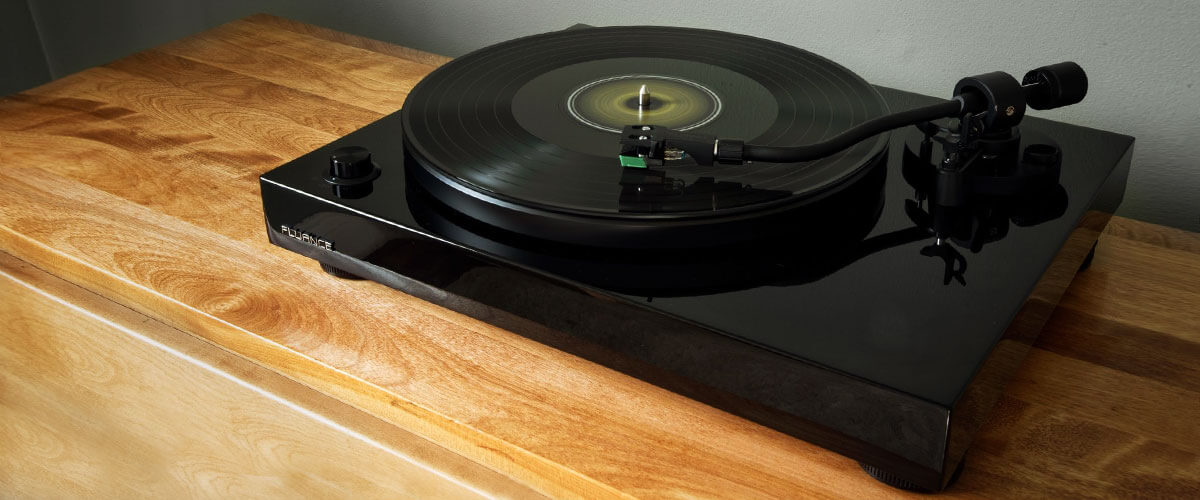
The S-Type tonearm crafted from aluminum feels like it’s guiding the stylus with a surgeon’s precision, effortlessly tracing the grooves of your records. This precision keeps unwanted resonance at bay, so all you hear is the music, pure and unadulterated. The platter beneath the record is solid and true, thanks to its resonance-damping feet – it’s the stable platform that your vinyl needs for a smooth ride. And while the RT81’s sound might err on the lighter side, it’s not a shortcoming. Instead, it feels like an open invitation from Fluance to grow with your system, to play and experiment with upgrades over time.
When contrasted with its peers, the RT81’s commitment to quality components stands out. Unlike the Electrohome’s all-in-one convenience or Sony’s Bluetooth-centric design, the RT81 is the vinyl purist’s entry-level dream. It also outshines the budget-friendly Audio-Technica AT-LP60X by offering room for growth through component upgrades, an attribute that cements its position at the top of the list.
In conclusion, the Fluance RT81 distinguishes itself as the overall best beginner record player, balancing performance, upgradeability, and a design that resonates with both the eyes and ears.
Key specs
- Drive type: belt.
- Operation type: manual.
- Speeds, RPM: 33 1/3, 45.
- Phono Pre-Amp: yes.
- Bluetooth: no.
- USB: no.
- Aux input: no.
Pros
- Straightforward setup, barring the tonearm balance, which requires some attention.
- The internal preamp provides a warm and true sound.
- The high-mass MDF wood plinth and metal platter are noted for their sturdiness and contribute to the turntable’s overall stability.
- It is easy to switch out the cartridge and stylus, enhancing the player’s adaptability and longevity.
- Semi-automatic arm return is a convenient feature, though it is not fully automatic.
Cons
- Increased hum when using the ground wire with a ‘Phono’ level signal, though using the ‘Line’ level setting seems to mitigate this problem.
- Non-detachable RCA cables.
Audio-Technica AT-LP60X – budget
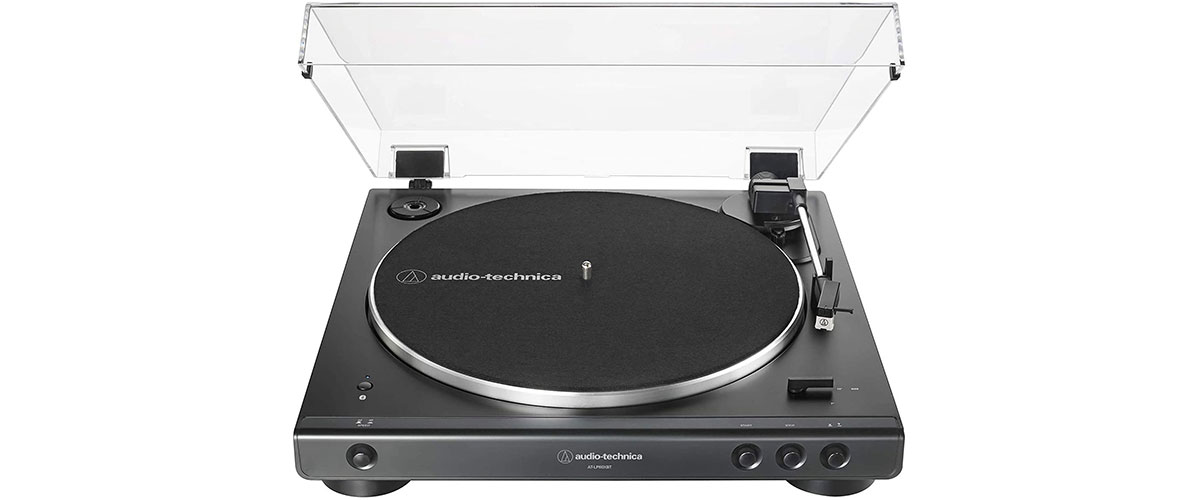
The Audio-Technica AT-LP60X is a testament to the idea that simplicity need not come at the expense of quality, especially when it comes to a basic record player. Its fully automatic belt-drive mechanism offers a hands-off experience, allowing vinyl enthusiasts to indulge in their records without the fuss of manual operation.
The redesign of the tonearm base and headshell marks a commendable effort to improve tracking and reduce resonance, which is no small feat for a turntable at this price point. The anti-resonance, die-cast aluminum platter works harmoniously with the system to reduce vibrational interference, resulting in a cleaner, more accurate sound reproduction.
The convenience extends to its setup, which is so user-friendly that it’s almost plug-and-play. With a detachable RCA output cable, the process is streamlined, though the quality of the included cables might not satisfy the more discerning ear – a minor gripe, considering the unit’s affordability.
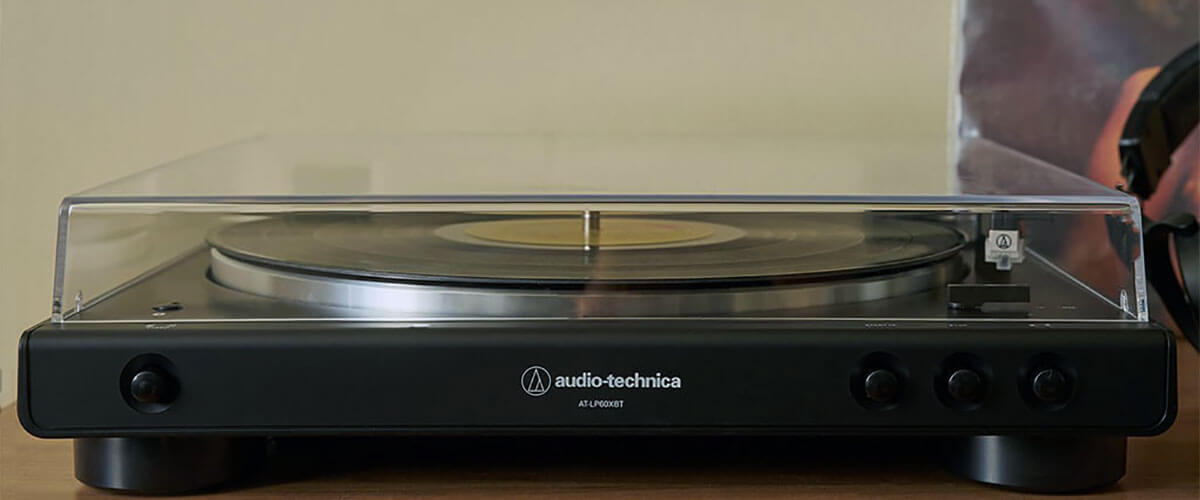
It is worth noting that the AT-LP60X’s plastic build may not exude the same level of robustness as higher-end models, and its pre-set configurations mean that customizability is limited. For audiophiles looking to dive into customization and upgrades, this might not be the turntable to tinker with. Yet, for those just beginning their vinyl journey, these are not necessarily deal-breakers.
During my time with the AT-LP60X, I found its audio performance pleasantly surprising for such a modestly priced machine. Its sound profile is characterized by a clear midrange and a decent treble, which brings vocals to life with an unexpected crispness. Although it doesn’t offer the deep, resonant bass or the expansive soundstage of more premium models, it still managed to fill my room with a warm and inviting sound.
Concluding, the Audio-Technica AT-LP60X secures its position as the best budget-friendly starter turntable. It’s a straightforward, no-nonsense introduction to the world of vinyl that promises an enjoyable listening experience without the steep learning curve or investment.
Key specs
- Drive type: belt.
- Operation type: fully automatic.
- Speeds, RPM: 33 1/3, 45.
- Phono Pre-Amp: yes.
- Bluetooth: yes.
- USB: no.
- Aux input: no.
Pros
- Fully automatic operation for ease of use, ideal for beginners.
- Improved design for better tracking and reduced resonance.
- External AC adapter to minimize noise in the signal chain.
Cons
- The plastic build might feel cheap and not as durable.
- Non-upgradable components, which limits future enhancements.
Electrohome Kingston 7-in-1 – all-in-one
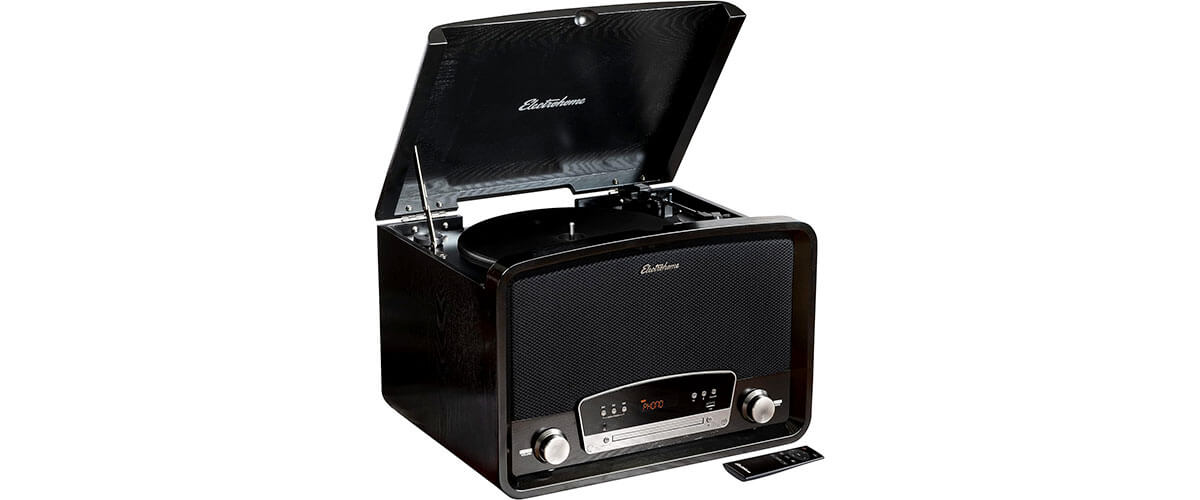
The Electrohome Kingston 7-in-1 is a nod to the classic vinyl experience, draped in the charm of yesteryears yet equipped to meet the needs of the modern listener. This all-in-one music center strikes a balance between multifunctionality and sound quality, which is quite an accomplishment for its size and price range.
Upon first glance, its wooden design not only exudes a sense of durability but also contributes to the overall sound quality. The wood naturally enhances acoustics, adding warmth to the vinyl playback that is both rich and inviting. The four built-in speakers do a commendable job of filling the room with sound. Although they may not satisfy the discerning ears of an audiophile, they are more than adequate if you are new to vinyl or looking for a compact setup.
The versatility of this unit is one of its strongest points. From spinning records to streaming music via Bluetooth, it wears many hats with ease. The ability to digitize your vinyl collection is a standout feature, adding value for those looking to preserve their records digitally. While the sapphire needle does a fair job, there is potential for an upgrade to a diamond needle, which could further refine the listening experience.
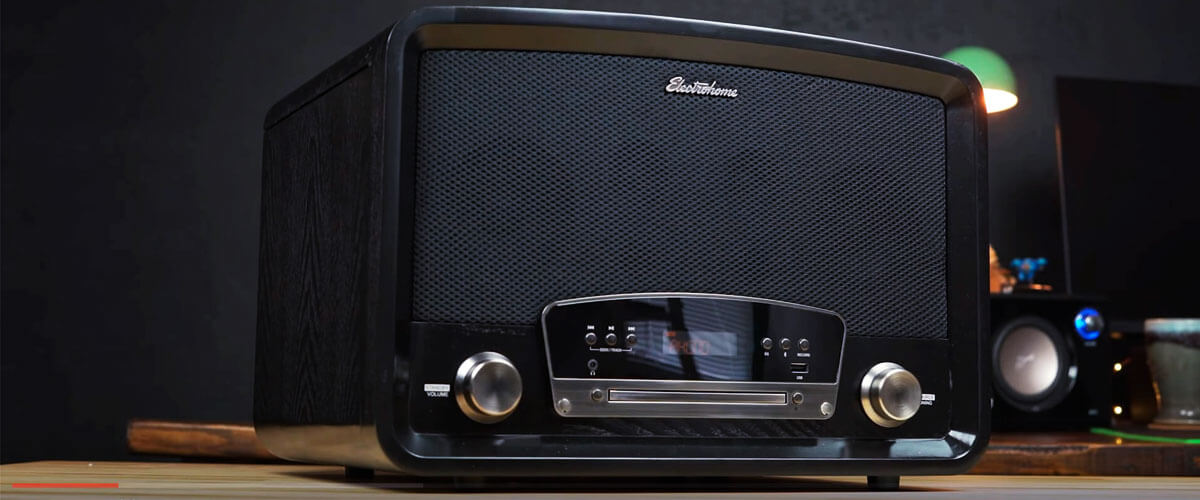
During my use, I found that while the turntable component produced a sound quality that outperformed expectations for an all-in-one system, there was room for improvement. The lack of an external speaker output means you are confined to the built-in speakers’ capabilities.
Conclusively, the Electrohome Kingston 7-in-1 positions itself as the best beginner turntable in terms of combining user-friendliness, aesthetic appeal, and a broad set of features, all while ensuring a satisfying sonic experience for the entry-level enthusiast.
Key specs
- Drive type: belt.
- Operation type: semi-automatic.
- Speeds, RPM: 33 1/3, 45, 78.
- Phono Pre-Amp: yes.
- Bluetooth: yes.
- USB: yes.
- Aux input: yes.
Pros
- Super versatile machine – eliminates the need for multiple audio systems.
- User-friendly controls.
- Integrated speakers deliver a satisfying sound for casual listeners.
- The vintage-inspired look adds a decorative touch to a living space.
Cons
- No output for external speakers.
- Cheap needle.
- Limited upgrade potential.
Sony PS-LX310BT – also great

Stepping into the world of vinyl with the Sony PS-LX310BT feels like a breath of fresh air. Its sleek design is not just for looks, it promises an effortless setup, making it inviting for vinyl newbies and convenient for more seasoned listeners.
The PS-LX310BT strikes an admirable balance, fusing the nostalgic allure of record playing with contemporary features like Bluetooth connectivity. It’s this hybrid of old and new that catches your attention – the ability to spin records without the web of wires is liberating, though there’s still the option for a physical connection if you’re a purist.
However, Sony doesn’t just play on convenience – the sound quality is also robust. The built-in preamp is a smart addition, offering a warm, clean output that, while not audiophile-grade, is satisfyingly immersive for a table at this price point. The USB port for ripping audio files is a thoughtful nod to digital convenience, complementing the analog experience.
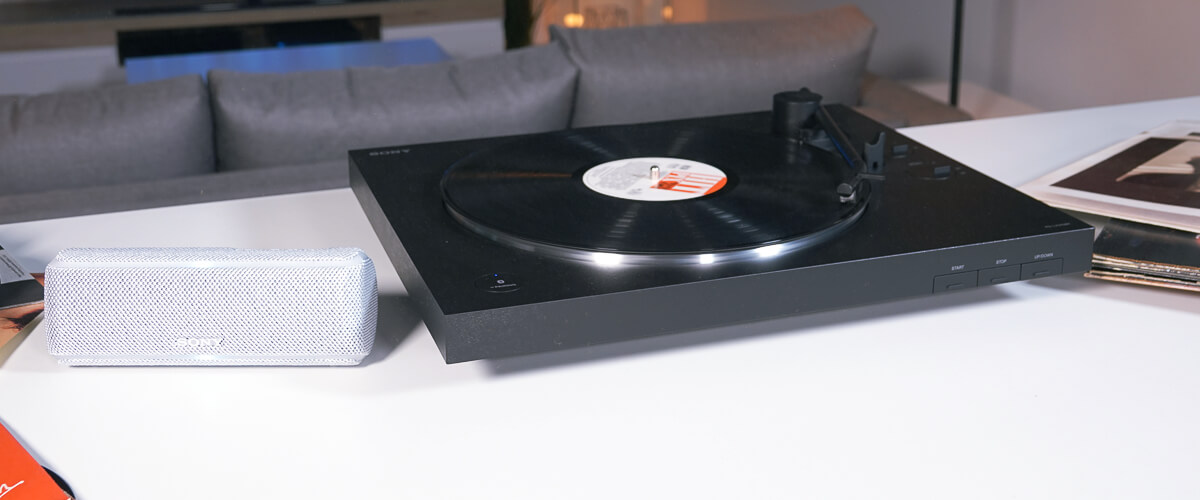
Build quality is what you’d expect from a brand like Sony: solid and reliable. The well-damped plinth and precision-driven platter ensure that your music is free from any vibration-induced distortion. And the automatic tonearm, coupled with a user-friendly control interface, adds to the turntable’s charm, welcoming listeners to the tactile world of vinyl with open arms.
In summary, the Sony PS-LX310BT exemplifies a simple record player that doesn’t skimp on quality. It is an excellent option for newcomers to vinyl, merging classic appeal with modern features in a compact, user-friendly package.
Key specs
- Drive type: belt.
- Operation type: fully-automatic.
- Speeds, RPM: 33 1/3, 45.
- Phono Pre-Amp: yes.
- Bluetooth: yes.
- USB: yes.
- Aux input: no.
Pros
- Simple to operate with its one-step auto start, stop, and return features.
- Versatile connectivity options.
- Decent sound quality.
- Sleek, minimalistic design.
Cons
- The power button’s rear placement is inconvenient.
- Non-detachable AC cables can be bothersome, especially since the turntable is marketed for its Bluetooth capabilities.
- The turntable may feel a bit cheap due to the plastic components.
Key features to look for when choosing your first vinyl player
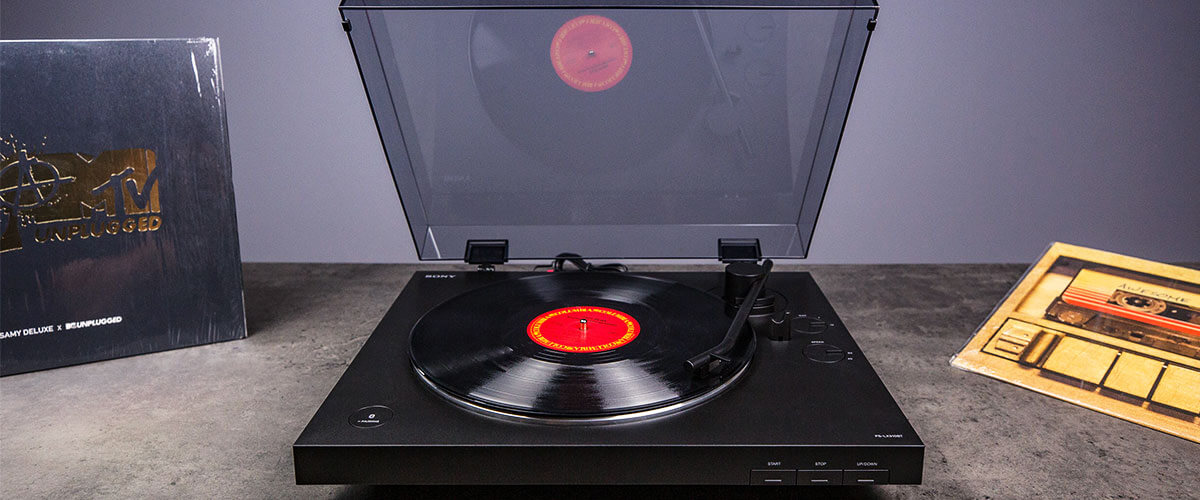
Built-in preamp vs external preamp
When picking your first record player, the preamp question is pivotal. A built-in preamp offers convenience, making your turntable a plug-and-play device suitable for connecting directly to speakers or a stereo system. For beginners, this is a blessing, streamlining the setup process. While an external preamp can provide a higher quality sound and more control over the audio output, it also introduces complexity and additional cost.
My take? Newbies will appreciate the simplicity of an integrated phono stage, allowing them to focus on enjoying their music rather than fiddling with extra components.
Belt drive vs. direct drive
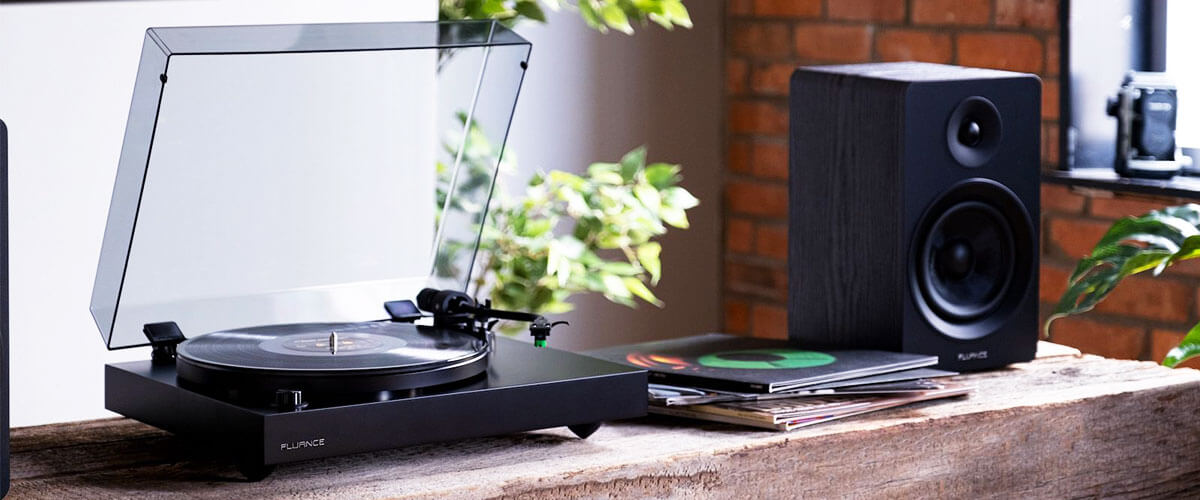
In the realm of turntables, the motor that spins the platter comes in two flavors: belt drive and direct drive. Belt drive turntables use an elastic belt to connect the motor to the platter, which helps to isolate motor noise for a clearer sound. They’re often preferred for their ability to reduce vibration and their generally lower cost. Direct drive turntables, on the other hand, have the motor directly under the platter, which enables quicker start-up times and is less prone to wear over time. Each system has its merits, so your choice may depend on whether you value sound isolation or durability and speed of use.
Manual vs. automatic tonearm
Choosing between a manual and automatic tonearm is an important consideration for any budding vinyl enthusiast. A manual tonearm requires you to physically lift and place the needle onto the record, offering a hands-on experience that many purists cherish. On the other side of the spectrum, automatic tonearms do the work for you, lifting and placing the stylus with the press of a button. This can be a real boon for beginners since it reduces the risk of scratching records and provides an easy and convenient listening experience.
Adjustable counterweight and anti-skate settings
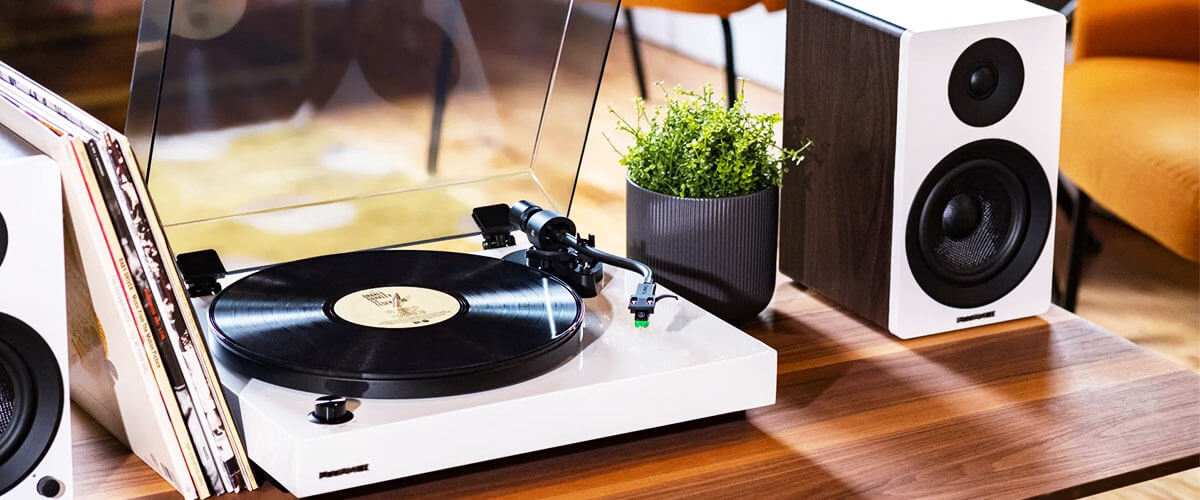
Adjustable counterweight and anti-skate settings are important components that affect playback stability and sound quality. The counterweight balances the tonearm, allowing the stylus to properly contact the record without applying too much force, which could damage the vinyl. Anti-skate prevents the arm from moving too far to one side, ensuring that the stylus stays centered in the record’s groove, which is essential for accurate stereo sound.
These features may seem daunting to newcomers, but they are worthwhile learning about. They allow you to fine-tune your TT as your ears grow more discerning, and your collection expands.
Connectivity options
Connectivity options determine how a record player will fit into your existing audio setup. Many beginner machines come with a variety of output options, such as RCA connectors, to plug into traditional stereo systems or powered speakers. Some may feature a USB port, which allows you to hook up the turntable to a computer to digitally record your LPs. Increasingly common are tables with built-in Bluetooth capability. This feature caters to convenience and reduces cable clutter, which can appeal to those aiming for a minimalist setup.
The key is to consider what devices you’ll be using to listen to your records and ensure the player you choose has compatible connectivity options to accommodate them.
We are supported by our audience. When you purchase through links on our site, we may earn an affiliate commission at no extra cost to you.
Our newsletter
* We will never send you spam or share your email with third parties

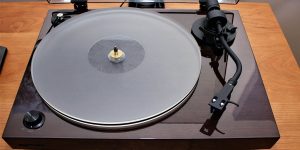

![Best Turntables Under $100 [Reviewed and Tested]](https://righttechadvice.com/wp-content/uploads/2023/09/best-turntable-under-100-300x150.jpg)
![Best Turntables Under $300 [Reviewed and Tested]](https://righttechadvice.com/wp-content/uploads/2023/10/best-turntable-under-300-review-300x150.jpg)
![Best Record Players Under $200 [Reviewed and Tested]](https://righttechadvice.com/wp-content/uploads/2023/10/best-turntable-under-200-300x150.jpg)

